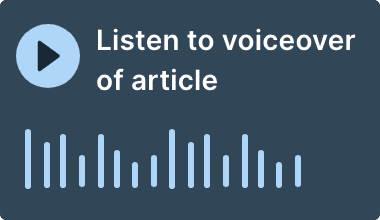For this month’s newsletter, I’d like to write about a specific company attribute we think makes for a wonderful long-term investment: “mission critical, non-core”. Whilst the concept is easily explained, finding those companies which have the purest form of this attribute is actually quite challenging. This newsletter will attempt to express Seilern’s definition of this attribute, as well as walk through some examples within the Seilern Universe.
In its most basic form, mission critical, non-core can be defined as a company which produces a good or service critical to the functioning of its customers’ operations, yet represents a relatively small portion of its customers’ operating costs. The power of this attribute is in the combination of both of these elements. A manufacturer of aeroplane engines will clearly be selling a mission critical product to its customers. However, because its product represents a large portion of an aeroplane’s total manufacturing cost, it would be considered ‘core’.
The key, then, is understanding what the benefits are of selling a non-core product over a core product. For this, I’ve dug out some interesting comments from Philip Fisher in 1957, who was one of the earliest proponents of growth investing. In his seminal piece, Common Stocks and Uncommon Profits, he made the following observation:
Technological development and scale are not the only aspects of a company’s activities in which unusual circumstances may raise the opportunities for sustained high profit margins. An example is a company that has created in its customers the habit of almost automatically specifying its products for reorder in a way that makes it rather uneconomical for a competitor to attempt to displace them.
He went on to outline two conditions which were necessary for this to happen. Firstly, the company must have built a reputation for quality and reliability of its product, that:
A) the customer recognises is very important for the proper conduct of his activities;
B) where an inferior or malfunctioning product would cause serious problems;
C) where no competitor is servicing more than a minor segment of the market so that the dominant company is nearly synonymous in the public mind with the source of supply; and yet
D) the cost of the product is only a quite small part of the customer’s total cost of operations.
The benefit of these characteristics is that, consequently, a customer looking to make moderate price reductions yields only very small savings relative to the risk of it changing suppliers. Indeed, what we have found in practice, is that a company which is able to produce a true mission critical, non-core product actually has stronger pricing power for this very reason. Why risk the quality and reliability of your product for a relatively small saving? It’s highly unlikely to be worth it.
Even this, however, does not ensure that a company which has been fortunate enough to get itself into this position will be able to enjoy above-average profit margins year after year. Fisher further discussed the second necessary condition:
It must have a product sold to many small customers rather than a few larger ones… As long as the dominant company maintains the quality of its product and the adequacy of its service, it can be displaced only by informed salesmen making individual calls. Yet the size of each customer’s orders make such a selling effort totally uneconomical.
At this point, it’s worth putting the theory into action via some examples. Two specific Seilern investments which most closely match all of the above attributes are West Pharmaceutical Services and Christian Hansen. Below I briefly outline how so.
West Pharmaceutical Services is a 97-year old US company which manufactures low-cost rubber components used in drug delivery devices. These include things such as rubber stoppers and seals used in vials and syringes. In addition to manufacturing these components, the largest part of West’s business is providing higher-margin value-add services to enhance the quality of these components for ready-to-use delivery to pharmaceutical customers. These components are considered mission critical as they require strict regulatory approval due to the fact that they come in direct contact with the drug itself. They are also considered non-core as they represent less than 1 per cent of a drug’s total manufacturing cost.
To further highlight the point, I’ll present a hypothetical example. If a pharmaceutical company currently sells a drug with $1 billion of sales, it’s likely that it will have spent less than $10 million on the components for the drug’s delivery package. A component competitor to West then offers a 20% discount on pricing, equating to a $2 million saving. In order to qualify this new supplier, the pharmaceutical company must conduct new package stability testing, which can cost between $1-2 million. Add to that all the other tangible and intangible costs associated with changing strategic primary suppliers, and the economics start to look frail. Someone at the pharmaceutical company is going to ask why they would risk $1 billion of sales to save $2 million on its components, whilst simultaneously increasing the risk of bringing on a new supplier with a much shorter track record? It’s unlikely to be worth it.
The other example is Chr Hansen, a 146-year old Danish company which develops and mass-produces natural ingredients for the food, health, pharmaceutical and farming industries. The largest part of Chr. Hansen’s business is the development and sale of cultures to a wide range of customers. These are then subsequently used by its customers to manufacture things like cheeses, yoghurts, and probiotics. The starter cultures that Chr Hansen provide are so essential to their clients’ products that the company are often involved in the designing of the entire manufacturing process. These cultures are also a key component in determining how an end product both tastes and feels, which is critical to ensuring end product consistency. Starter cultures are highly complex and costly to produce at scale whilst maintaining the specific customer and regulatory requirements over time, particularly seeing as their biologic nature means they have a bad habit of mutating. They are, therefore, a critical and indispensable component of the manufacturing processes for Chr. Hansen’s customers.
At the same time, starter cultures represent as little as 1 per cent of the total manufacturing cost of Chr Hansen’s customers’ end products, and could therefore be considered truly non-core. For a key customer such as Danone, does it make sense to either a) change suppliers and completely disrupt the supply chain, while putting at risk the consistency and quality of the very product they are selling (all for a small saving), or b) spend significant amounts of capital to in-source this entire production process, in order to only achieve some small incremental vertical integration savings (whilst likely not being able to replicate the same product quality standard)? Once again, it would appear that it’s unlikely to be worth it.
In conclusion, the reader should now have a clearer idea of this unique company attribute which we attempt to look for in many of our investments. The real strength of a company selling mission critical, non-core products and services is its ability to maintain pricing power through cycles. This power is a key feature of quality growth companies, helping them to create more defensive and forecastable revenue streams compared to other companies which are at the mercy of external pricing pressures (e.g. banks, airlines, automotives, mining and resources, and energy companies). Companies with this attribute have the ability to embed themselves neatly within their customers’ operations, usually making them nearly impossible to displace. When you find this attribute in a company at the right price, buy it and hold onto it for many years.
M. Lo Blanco,
02 July 2020
Any forecasts, opinions, goals, strategies, outlooks and or estimates and expectations or other non-historical commentary contained herein or expressed in this document are based on current forecasts, opinions and or estimates and expectations only, and are considered “forward looking statements”. Forward-looking statements are subject to risks and uncertainties that may cause actual future results to be different from expectations. Nothing in this newsletter is a recommendation for a particular stock. The views, forecasts, opinions and or estimates and expectations expressed in this document are a reflection of Seilern Investment Management Ltd’s best judgment as of the date of this communication’s publication, and are subject to change. No responsibility or liability shall be accepted for amending, correcting, or updating any information or forecasts, opinions and or estimates and expectations contained herein.
Please be aware that past performance should not be seen as an indication of future performance. Any financial instrument included in this website could be considered high risk and investors may not get back all of their original investment. The value of any investments and or financial instruments included in this website and the income derived from them may fluctuate and you may not receive back the amount originally invested. In addition stock market fluctuations and currency movements may also affect the value of investments.
Get the latest insights & events direct to your inbox
"*" indicates required fields





